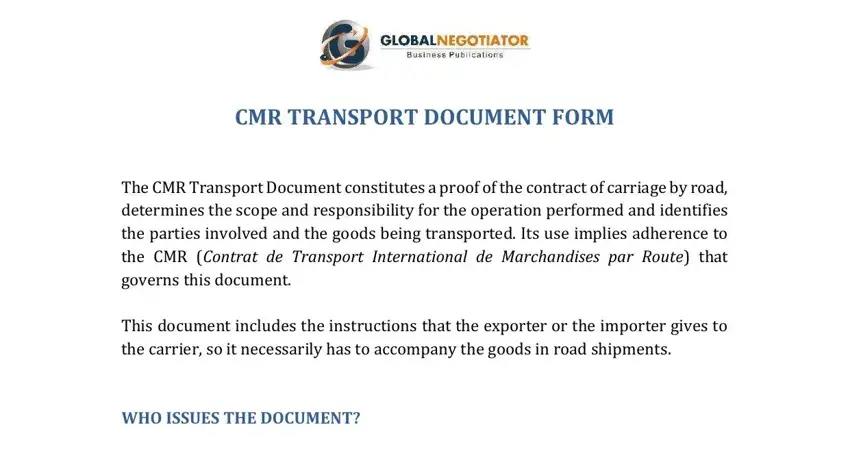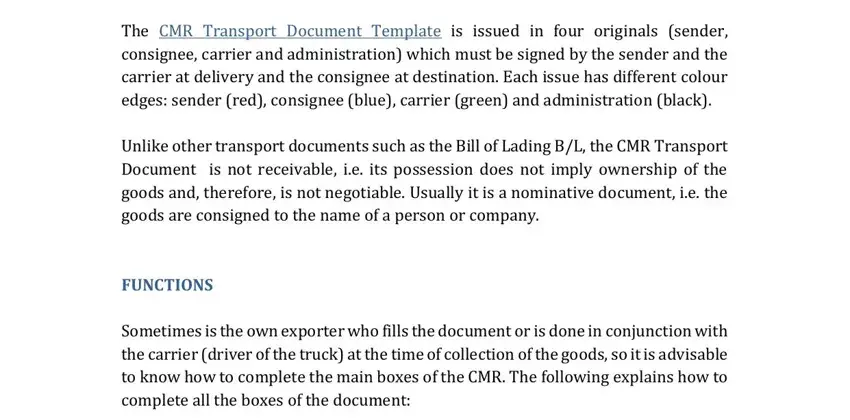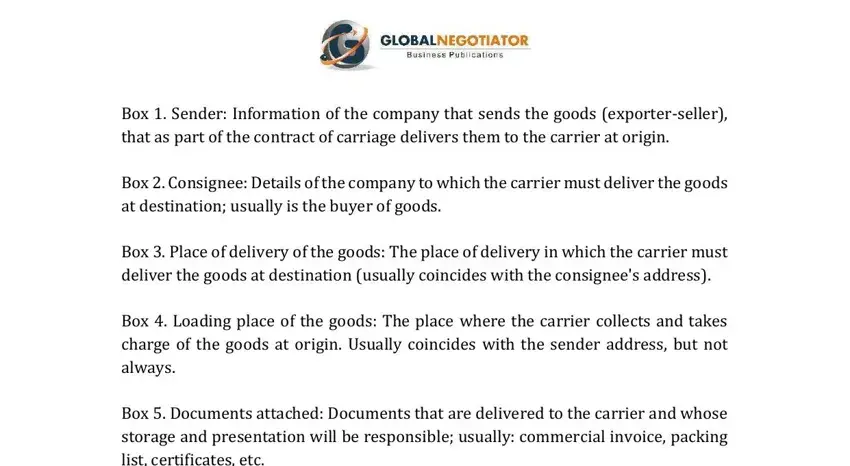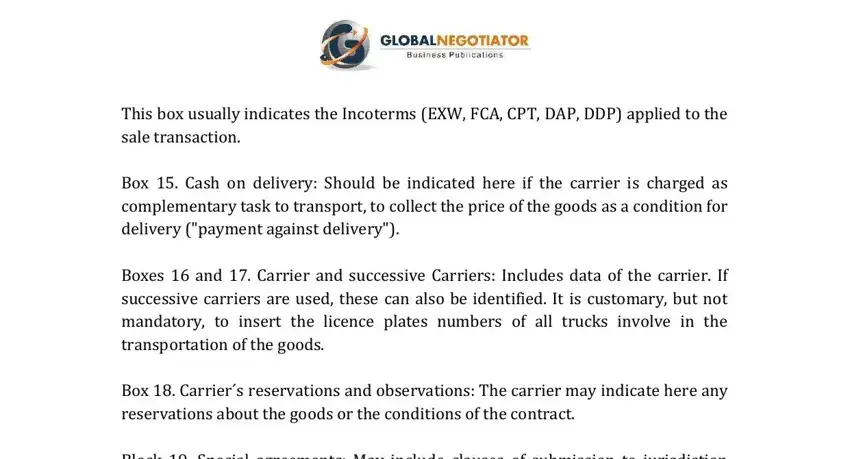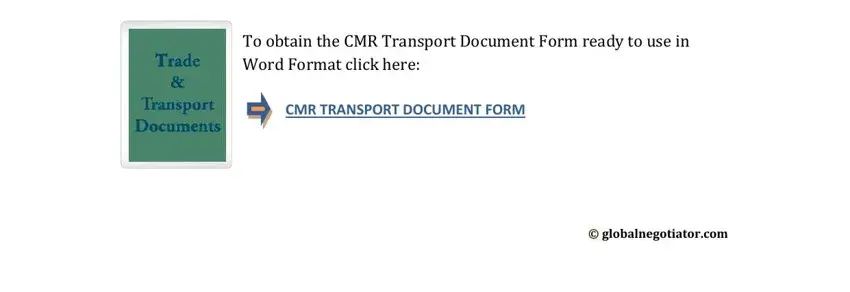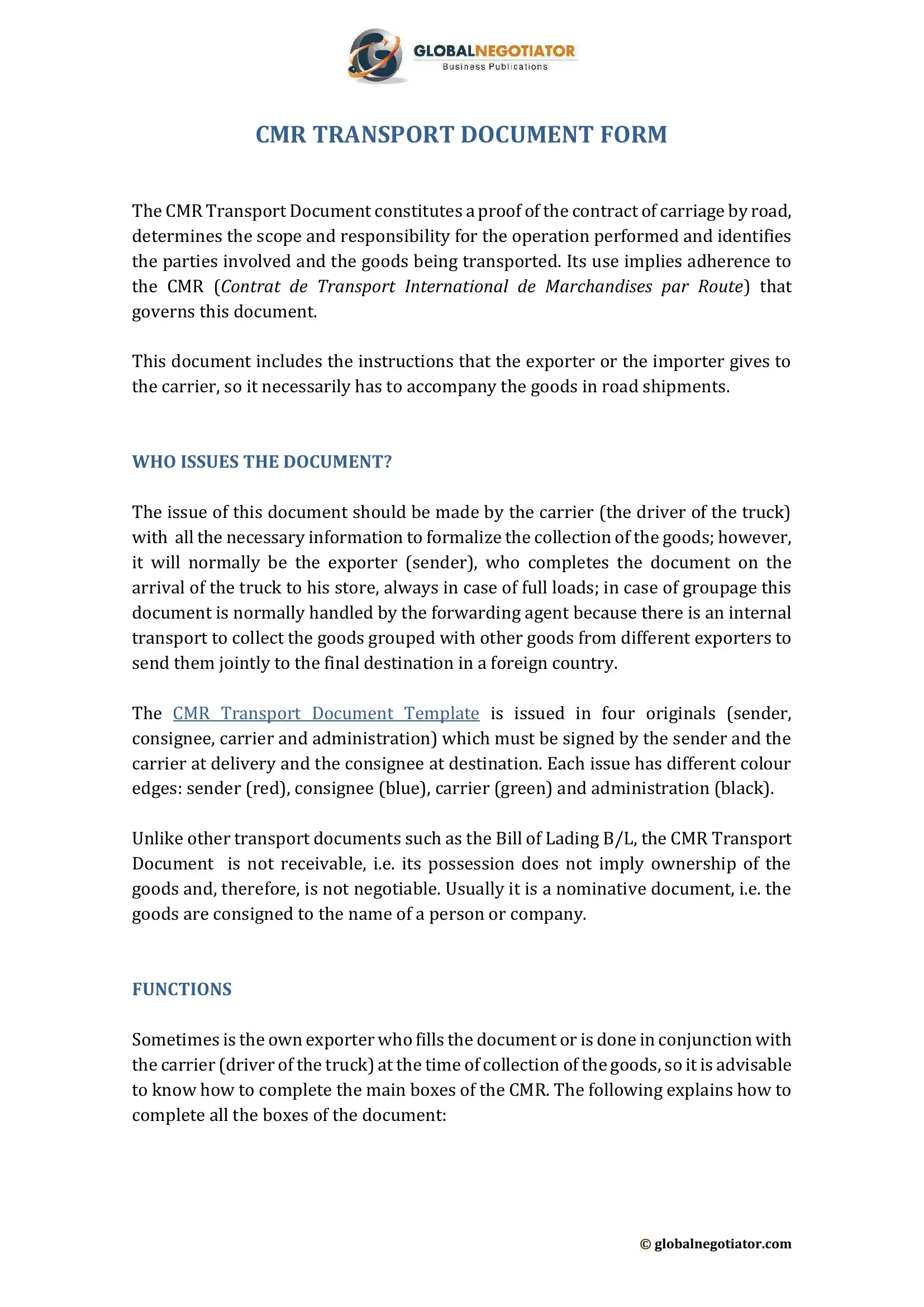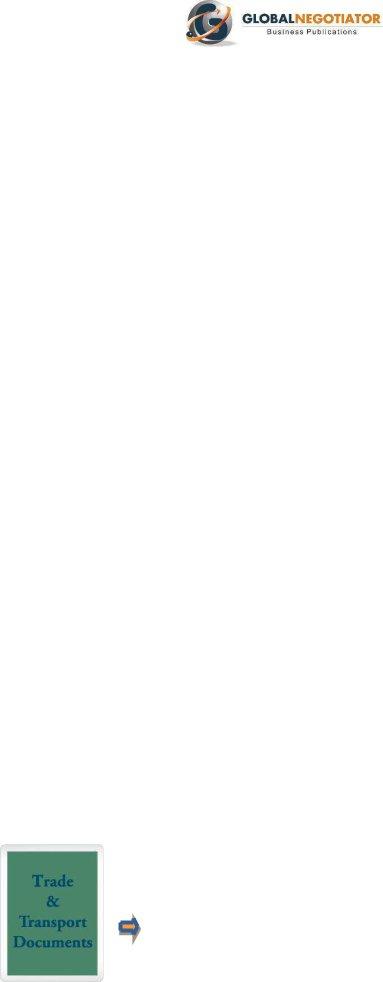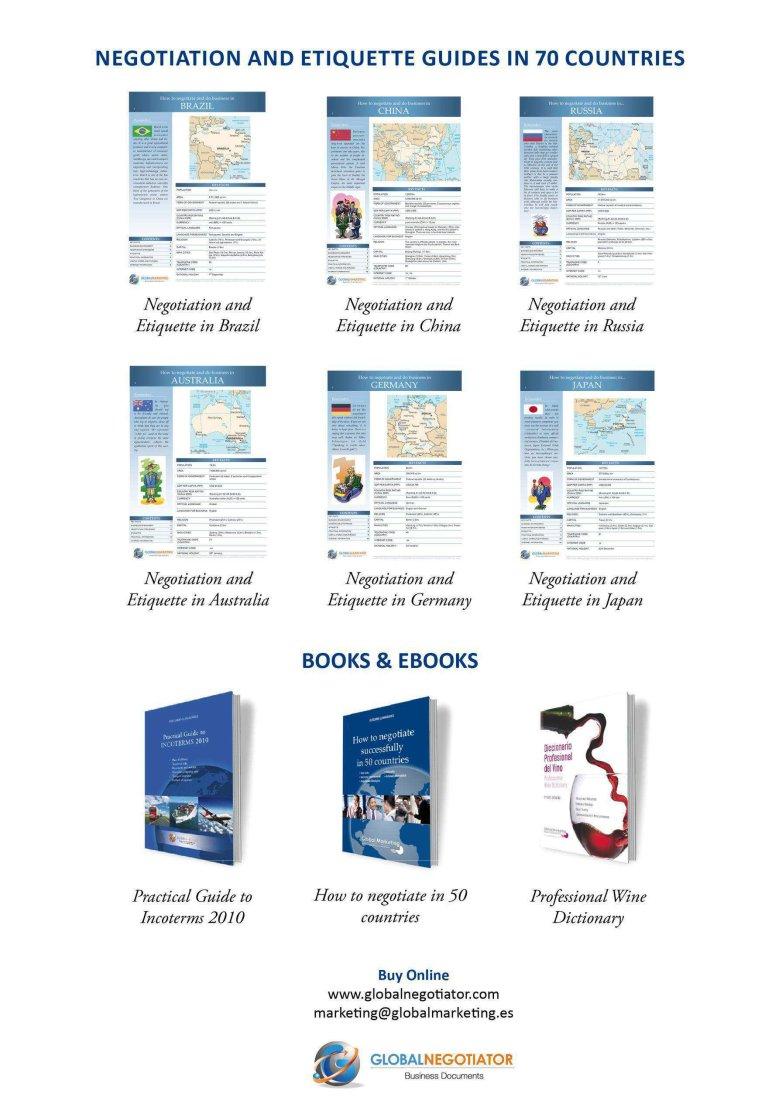CMR TRANSPORT DOCUMENT FORM
The CMR Transport Document constitutes a proof of the contract of carriage by road, determines the scope and responsibility for the operation performed and identifies the parties involved and the goods being transported. Its use implies adherence to the CMR (Contrat de Transport International de Marchandises par Route) that governs this document.
This document includes the instructions that the exporter or the importer gives to the carrier, so it necessarily has to accompany the goods in road shipments.
WHO ISSUES THE DOCUMENT?
The issue of this document should be made by the carrier (the driver of the truck) with all the necessary information to formalize the collection of the goods; however, it will normally be the exporter (sender), who completes the document on the arrival of the truck to his store, always in case of full loads; in case of groupage this document is normally handled by the forwarding agent because there is an internal transport to collect the goods grouped with other goods from different exporters to send them jointly to the final destination in a foreign country.
The CMR Transport Document Template is issued in four originals (sender, consignee, carrier and administration) which must be signed by the sender and the carrier at delivery and the consignee at destination. Each issue has different colour edges: sender (red), consignee (blue), carrier (green) and administration (black).
Unlike other transport documents such as the Bill of Lading B/L, the CMR Transport Document is not receivable, i.e. its possession does not imply ownership of the goods and, therefore, is not negotiable. Usually it is a nominative document, i.e. the goods are consigned to the name of a person or company.
FUNCTIONS
Sometimes is the own exporter who fills the document or is done in conjunction with the carrier (driver of the truck) at the time of collection of the goods, so it is advisable to know how to complete the main boxes of the CMR. The following explains how to complete all the boxes of the document:
© globalnegotiator.com
Box 1. Sender: Information of the company that sends the goods (exporter-seller), that as part of the contract of carriage delivers them to the carrier at origin.
Box 2. Consignee: Details of the company to which the carrier must deliver the goods at destination; usually is the buyer of goods.
Box 3. Place of delivery of the goods: The place of delivery in which the carrier must deliver the goods at destination (usually coincides with the consignee's address).
Box 4. Loading place of the goods: The place where the carrier collects and takes charge of the goods at origin. Usually coincides with the sender address, but not always.
Box 5. Documents attached: Documents that are delivered to the carrier and whose
storage and presentation will be responsible; usually: commercial invoice, packing list, certificates, etc.
Boxes 6 to 9. Marks and numbers, number of packages, method of packing, nature of the goods: the sender must identify all that shipment data. It is customary to indicate the trademarks that identify and that are observed in the packing, the number of packages and packing mode (i.e. 24 euro pallets, 768 boxes), and a sufficient description and identification of the goods. It is important that the driver of the truck check, before signing the CMR, that the description of the goods matches the shipment loaded into the vehicle.
Box 10. Statistic No: When completed, it usually indicates the combined nomenclature code or TARIC code (EU customs tariff code) of the goods. In practice this box is usually left blank.
Boxes 11 and 12. Gross weight and volume: Gross weight in kg. is usually indicated (it serves to fix the compensation limit of the carrier in case of loss or damage). Normally the volume is not indicated.
Box 13. Sender´s instructions: This box is important; it usually includes all kinds of instructions regarding aspects such as customs formalities, transfer prohibition, transport insurance, temperature, hours of arrival and departure in the warehouses, information about the exchange of pallets and, with increasing frequency, deadline transport (date and time range to deliver on the goods on arrival).
Box 14. Payment: This box is also very important because it must clearly state who pays the transport (the sender -"prepaid"- or the consignee -"carriage forward"-).
© globalnegotiator.com
This box usually indicates the Incoterms (EXW, FCA, CPT, DAP, DDP) applied to the sale transaction.
Box 15. Cash on delivery: Should be indicated here if the carrier is charged as complementary task to transport, to collect the price of the goods as a condition for delivery ("payment against delivery").
Boxes 16 and 17. Carrier and successive Carriers: Includes data of the carrier. If successive carriers are used, these can also be identified. It is customary, but not mandatory, to insert the licence plates numbers of all trucks involve in the transportation of the goods.
Box 18. Carrier´s reservations and observations: The carrier may indicate here any reservations about the goods or the conditions of the contract.
Block 19. Special agreements: May include clauses of submission to jurisdiction (Courts or Arbitration Board Transportation), insurance conditions, time of transport, etc. This box is also appropriate to insert value declarations of the goods or special interest in delivery.
Box 20. Charges: usually left blank.
Box 21. Place and date of issue: The place is usually repeated in box 4; the box indicate the date of issue of the document.
Block 22 and 23. Signature and stamp of the sender and the carrier: With the signature of both the place and date of issue, the CMR document is formalized.
Box 24. Goods received (signature and stamp of the consignee): This box serves to proof the delivery of the goods at destination.
------------------------------------------
To obtain the CMR Transport Document Form ready to use in
Word Format click here:
CMR TRANSPORT DOCUMENT FORM
© globalnegotiator.com
